PRODUCTS
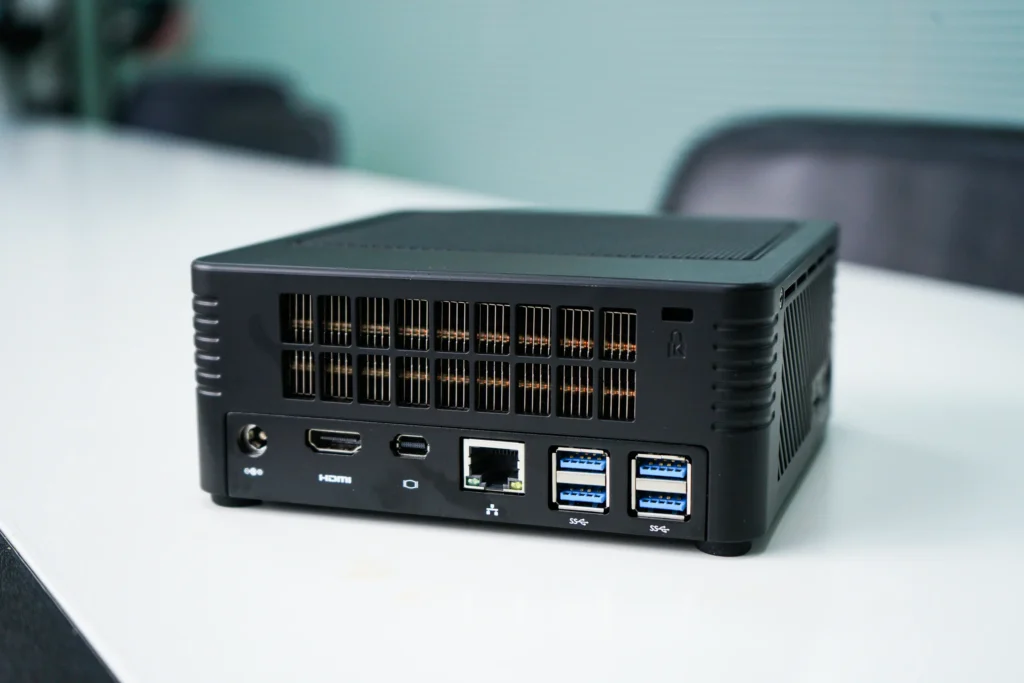
A thin client isl a lightweight computing device that relies on a central server for processing power
and storage, rather than having substantial hardware capabilities of its own. Typically used in
enterprise environments, thin clients connect to virtualized desktop environments or cloud services,
allowing users to access applications and data remotely. This architecture enhances security,
simplifies management, and reduces hardware costs, as updates and maintenance are primarily
handled on the server side. With minimal local processing, thin clients are energy-efficient and can
be deployed in various settings, from corporate offices to educational institutions.
INP minicomputers:
INP minicomputers are often designed for compact, Iow-power applications, targeting both
enthusiasts and industry users looking for space-efficient computing solutions. Here’s an example of
what an INP minicomputer might feature, based on typical small-form-factor PC characteristics:
Key Features of an INP Minicomputer:
Compact Design:
– INP minicomputers usually feature a small, fanless chassis, making them perfect for environments
with limited space or where quiet operation is essential, such as digital signage or embedded
systems.
Low Power Consumption:
– These minicomputers are optimized for Iow energy usage making them ideal for 24/7 operations
in IoT applications, home automation, or server tasks.
Processor:
– Powered by energy-efficient processors such as Intel Celeron or ARM-based chips, INP computers
are built to handle basic computing tasks like web browsing, media streaming, or lightweight
applications.
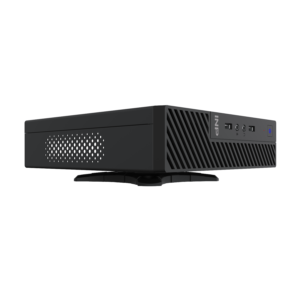
INP minicomputers:
INP minicomputers are often designed for compact, low-power applications, targeting both
enthusiasts and industry users looking for space-efficient computing solutions. Here’s an example of
what an INP minicomputer might feature, based on typical small-form-factor PC characteristics:
Key Features of an INP Minicomputer:
Compact Design:
– INP minicomputers usually feature a small, fanless chassis, making them perfect for environments
with limited space or where quiet operation is essential, such as digital signage or embedded
systems.
Low Power Consumption:
– These minicomputers are optimized for low energy usage making them ideal for 24/7 operations
in IoT applications, home automation, or server tasks.
Processor:
– Powered by energy-efficient processors such as Intel Celeron or ARM-based chips, INP computers
are built to handle basic computing tasks like web browsing, media streaming, or lightweight
applications.
Memory & Storage:
– Typically, they come with 2GB to 86B of RAM, and offer options for eMMC storage or SSD
(upgradable via M.2 or SATA slots), suitable for light workloads and quick boot times.
Multiple 1/0 Ports:
– Despite their small size, INP minicomputers often include multiple 1/0 ports like USB 3.0, HDMI,
Ethernet, and audio jacks, making them versatile for peripheral connections, media outputs, and
network connectivity.
Connectivity Options:
– Standard wireless options like Wi-Fi and Bluetooth are available, along with Gigabit Ethernet for
high-speed wired networking.
Operating System:
– They often run lightweight operating systems like Windows IO IoT, Linux distributions, or custom
OS versions suited for industrial or embedded use.
Expandability:
– Some INP minicomputers provide slots for additional storage or RAM upgrades, allowing for some
flexibility in performance depending on user needs.
Mounting Options:
– Many minicomputers are VESA-mountable, allowing them to be attached to the back of monitors
or walls to save even more space.
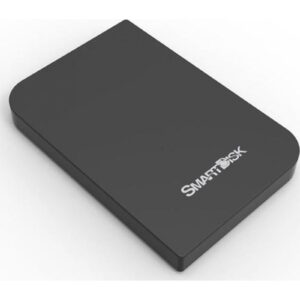
SmartDisk Minicomputer:
The SmartDisk Minicomputer is one of the lesser-known mini-PCs that has compact, portable design
features often suited for lightweight computing tasks. Below are some general features that
SmartDisk minicomputers are known for:
Key Features:
Compact Size:
Small Form Factor: The SmartDisk minicomputer is designed to fit in tight spaces. It is typically
smaller than a standard desktop PC, making it easy to carry around or integrate into a minimal
workspace.
Processor:
Low-power CPU: SmartDisk minicomputers usually come with energy-efficient processors (like Intel
Atom or Celeron) suitable for basic computing tasks, such as web browsing, document editing, or
running lightweight applications.
Storage:
SSD Storage: These devices often feature Solid-State Drives (SSD) for faster data access and boot-up
times, with smaller capacities like 32GB, 64GB, or 128GB, depending on the model.
Memory (RAM):
Moderate RAM (2GB – 4GB): Typically equipped with 26B or 46B of RAM, enough for basic
multitasking and light applications, but may struggle with resource-intensive programs.
Ports and Connectivity:
USB Ports: Smart Disk minicomputers generally come with several USB 2.0 and 3.0 ports for
connecting peripherals such as keyboards, mice, and external storage.
HDMI/VGA Output: Provides options for connecting to external monitors or TVs, making it suitable
for media streaming or using as a media centre.
Wi-Fi and Ethernet: Offers both wireless and wired networking options for internet access.
Operating System:
Windows or Linux: Most Smart Disk mini-PCs run lightweight versions of Windows (like Windows IO
IoT) or Linux distributions, which are optimized for low-power devices.
Low Power Consumption:
Due to its compact size and energy-efficient components, the SmartDisk mini-PC consumes very little
power, making it ideal for continuous use or in environments where power efficiency is essential.
WeeEdge Minicomputer:
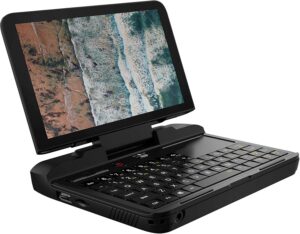
WeeEdge Minicomputer:
The WeeEdge Minicomputer seems to be a compact, fanless mini-PC designed for light computing
tasks, IoT, and office-related work. While specific details about this product might vary based on the
manufacturer or reseller, here’s a general idea of what to expect from minicomputers in this
category:
Typical Features of WeeEdge Minicomputers:
Processor: Often equipped with energy-efficient processors like Intel Atom, Celeron, or Pentium,
which are great for basic productivity tasks.
RAM: Usually ranges from 2GB to 8GB, depending on the model and intended use case.
Storage: SSD options with varying capacities (e.g., 64GB, 128GB, 256GB), sometimes expandable via
microSD or other forms of storage.
Ports: Includes a range of connectivity options like HDMI, USB (both 2.0 and 3.0), Ethernet, and
sometimes USB-C.
Networking: Offers Wi-Fi and Bluetooth capabilities for wireless connectivity.
Operating System: May run a lightweight Linux distribution or Windows 10/11, making it suitable for
basic desktop use or industrial applications.
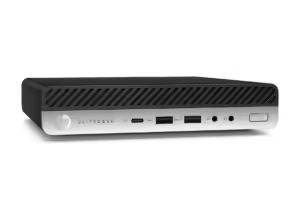
HP EliteDesk Mini PC:
HP offers several minicomputers, often referred to as “mini-PCs” or “micro desktops,” designed for
both business and personal use. Here’s a detailed explanation of a popular model:
HP EliteDesk Mini PC
Key Features:
Compact Size:
The HP Mini PC is designed to save space while offering full desktop performance in a small form
factor. It’s ideal for workspaces where space is a premium, such as small offices or home offices.
Powerful Performance:
Processor: Available with 10th Gen Intel Core i5, i7, and i9 processors, including Intel vPro
technology for enterprise-grade performance.
Memory: Supports up to 64GB of DDR4 RAM, ensuring smooth multitasking and handling
demanding applications.
Storage: Offers SSD storage options up to 2 T B, ensuring faster boot times and improved data access
speed.
Graphics Options:
Integrated Intel UHD Graphics is suitable for basic tasks, but it also offers discrete graphics options
like NVIDIA GeForce GTX 1660 Ti or AMD Radeon RX 5500, making it capable of handling light
gaming, video editing, or 3D design.
Connectivity:
USB Ports: Multiple USB Type-C and Type-A ports, including Thunderbolt 3, allowing for high-speed
data transfer and peripheral connections.
Display Options: Supports up to three 4K monitors via HDMI, DisplayPort, and USB-C, making it a
great choice for productivity and multitasking.
Networking: Gigabit Ethernet and optional Wi-Fi 6 for fast, reliable internet connectivity. It also
includes Bluetooth for wireless peripherals.
Security Features:
The HP Mini PC includes advanced security features such as:
HP Sure Start: A self-healing BIOS that recovers automatically from corruption.
HP Sure Click: Protects against malware and phishing by isolating risky content in its own virtual
container.
TPM 2.0: Secure storage for encryption keys, protecting sensitive data.
Expandability:
Despite its small form factor, the HP EliteDesk Mini offers some expandability, including an optional
1/0 port for additional connectivity (serial, HDMI, VGA, etc.) and an M.2 slot for storage or other
hardware expansion.
Energy Efficiency:
The mini-PC is ENERGY STAR certified, ensuring it meets energy-efficiency standards, making it a
more eco-friendly choice. Its power supply also offers Iow-energy consumption in idle mode.
Durability:
Designed for business environments, the HP EliteDesk Mini undergoes military-grade testing (MIL-
STD 810G), ensuring durability and reliability under harsh conditions.
Customization and Flexibility:
With the ability to mount behind monitors (via VESA mounts), under desks, or in other out-of-sight
locations, the HP Mini PC is extremely flexible in terms of placement.
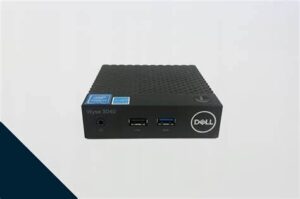
Dell Minicomputer:
Dell offers a range of compact minicomputers, mainly under their OptiPlex and Inspiron series. Here’s
an overview of a popular Dell minicomputer:
Dell OptiPlex 7090 Micro
Processor: Up to 11th Gen Intel Core i9
RAM: Up to 646B DDR4
Storage: Options for SSD up to 2 TB
Graphics: Intel UHD Graphics, optional discrete GPUs for higher performance
Ports: Multiple USB ports (USB-C and USB-A), HDMI, DisplayPort, Ethernet
Size: Extremely compact, fitting behind monitors or under desks
Use Case: Ideal for business and office environments where space is a premium, but performance is
still important
Additional Features: Supports dual or triple monitor setups, tool-less design for easy upgrades, and
enhanced security features like TPM 2.0.
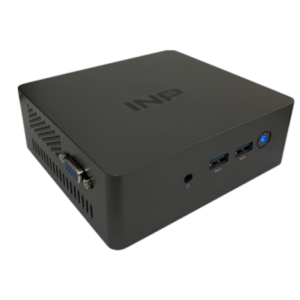
INP Thin Client:
The INP Thin Client is a compact and energy-efficient device designed for seamless remote access to
virtual desktops, featuring robust security, multiple USB ports, dual monitor support, and
compatibility with various operating systems, making it ideal for business environments where
centralized management and resource optimization are essential.
Features:
I.Compact Design: Lightweight and small footprint for easy deployment in space-constrained environments.
2.Energy Efficient: Consumes less power compared to traditional PCs, reducing operational
costs.
3.Centralized Management: Supports easy management and maintenance via a central
server.
4.Multiple Protocol Support: Compatible with various remote desktop protocols (RDP, ICA, etc.) for flexibility.
5.Secure Access: Provides secure connections to virtual desktops and applications to enhancedata security.
6.Fast Boot Time: Quick startup times to improve user productivity.
7.Wide Connectivity Options: Includes multiple USB ports, HDMI, and Ethernet for extensive
8.connectivity.
Support for Multiple Displays: Enables multi-monitor setups for enhanced productivity.
9.Durable Build: Designed for long-term use in demanding environments.
10. Cost-Effective: Lower total cost of ownership compared to traditional desktops due to
reduced hardware and maintenance needs.

SmartDisk Thin Client:
A compact, energy-efficient device designed for cloud computing with features like remote desktop
access, support for multiple protocols (RDP, ICA), integrated security, and a finless design for quiet
operation.
Features:
Processor: Energy-efficient ARM or Intel processors for optimized performance.
Memory: Typically comes with 2GB to 8GB RAM for basic computing tasks.
Storage: Flash storage options ranging from 4GB to 64GB for fast data access.
Operating System: Supports various OS options, including Windows, Linux, and thin client-specific
systems.
Connectivity: Multiple USB ports, Ethernet, and optional Wi-Fi for versatile connectivity.
Display: Dual monitor support through HDMI and VGA outputs.
Form Factor: Compact design, easily mountable behind monitors or on desks.
Security: Built-in security features for secure access to cloud and virtual environments.
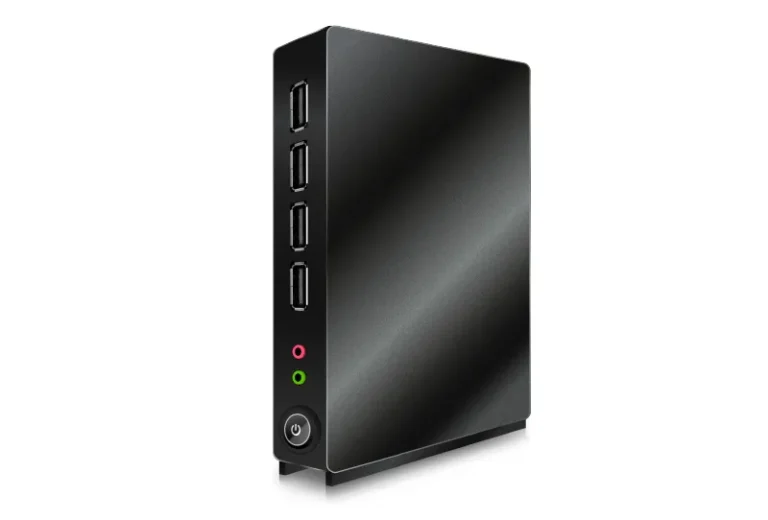
Weeedge Thin Client:
he Weeedge Thin Client features a compact design, energy-efficient performance, support for
multiple display outputs, and robust security measures, making it ideal for remote desktop
environments and cloud computing.
Features:
Processor: Quad-core CPU for efficient multitasking.
RAM: Up to 8GB DDR4 for smooth performance.
Storage: eMMC storage options of 16GB, 32GB, or 64GB.
Connectivity: Multiple USB ports, HDMI, DisplayPort, and Ethernet for versatile
connectivity.
Wireless: Built-in Wi-Fi and Bluetooth for wireless connectivity.
Operating System: Supports various OS options including Windows, Linux, and thin
client solutions.
Power Efficiency: Low power consumption for eco-friendly operation.
Security: Integrated security features to protect data in cloud environments.
Form Factor: Compact design suitable for various deployment scenarios

A thin client isl a lightweight computing device that relies on a central server for processing power
and storage, rather than having substantial hardware capabilities of its own. Typically used in
enterprise environments, thin clients connect to virtualized desktop environments or cloud services,
allowing users to access applications and data remotely. This architecture enhances security,
simplifies management, and reduces hardware costs, as updates and maintenance are primarily
handled on the server side. With minimal local processing, thin clients are energy-efficient and can
be deployed in various settings, from corporate offices to educational institutions.
INP minicomputers:
INP minicomputers are often designed for compact, Iow-power applications, targeting both
enthusiasts and industry users looking for space-efficient computing solutions. Here’s an example of
what an INP minicomputer might feature, based on typical small-form-factor PC characteristics:
Key Features of an INP Minicomputer:
Compact Design:
– INP minicomputers usually feature a small, fanless chassis, making them perfect for environments
with limited space or where quiet operation is essential, such as digital signage or embedded
systems.
Low Power Consumption:
– These minicomputers are optimized for Iow energy usage making them ideal for 24/7 operations
in IoT applications, home automation, or server tasks.
Processor:
– Powered by energy-efficient processors such as Intel Celeron or ARM-based chips, INP computers
are built to handle basic computing tasks like web browsing, media streaming, or lightweight
applications.

INP minicomputers:
INP minicomputers are often designed for compact, low-power applications, targeting both
enthusiasts and industry users looking for space-efficient computing solutions. Here’s an example of
what an INP minicomputer might feature, based on typical small-form-factor PC characteristics:
Key Features of an INP Minicomputer:
Compact Design:
– INP minicomputers usually feature a small, fanless chassis, making them perfect for environments
with limited space or where quiet operation is essential, such as digital signage or embedded
systems.
Low Power Consumption:
– These minicomputers are optimized for low energy usage making them ideal for 24/7 operations
in IoT applications, home automation, or server tasks.
Processor:
– Powered by energy-efficient processors such as Intel Celeron or ARM-based chips, INP computers
are built to handle basic computing tasks like web browsing, media streaming, or lightweight
applications.
Memory & Storage:
– Typically, they come with 2GB to 86B of RAM, and offer options for eMMC storage or SSD
(upgradable via M.2 or SATA slots), suitable for light workloads and quick boot times.
Multiple 1/0 Ports:
– Despite their small size, INP minicomputers often include multiple 1/0 ports like USB 3.0, HDMI,
Ethernet, and audio jacks, making them versatile for peripheral connections, media outputs, and
network connectivity.
Connectivity Options:
– Standard wireless options like Wi-Fi and Bluetooth are available, along with Gigabit Ethernet for
high-speed wired networking.
Operating System:
– They often run lightweight operating systems like Windows IO IoT, Linux distributions, or custom
OS versions suited for industrial or embedded use.
Expandability:
– Some INP minicomputers provide slots for additional storage or RAM upgrades, allowing for some
flexibility in performance depending on user needs.
Mounting Options:
– Many minicomputers are VESA-mountable, allowing them to be attached to the back of monitors
or walls to save even more space.

SmartDisk Minicomputer:
The SmartDisk Minicomputer is one of the lesser-known mini-PCs that has compact, portable design
features often suited for lightweight computing tasks. Below are some general features that
SmartDisk minicomputers are known for:
Key Features:
Compact Size:
Small Form Factor: The SmartDisk minicomputer is designed to fit in tight spaces. It is typically
smaller than a standard desktop PC, making it easy to carry around or integrate into a minimal
workspace.
Processor:
Low-power CPU: SmartDisk minicomputers usually come with energy-efficient processors (like Intel
Atom or Celeron) suitable for basic computing tasks, such as web browsing, document editing, or
running lightweight applications.
Storage:
SSD Storage: These devices often feature Solid-State Drives (SSD) for faster data access and boot-up
times, with smaller capacities like 32GB, 64GB, or 128GB, depending on the model.
Memory (RAM):
Moderate RAM (2GB – 4GB): Typically equipped with 26B or 46B of RAM, enough for basic
multitasking and light applications, but may struggle with resource-intensive programs.
Ports and Connectivity:
USB Ports: Smart Disk minicomputers generally come with several USB 2.0 and 3.0 ports for
connecting peripherals such as keyboards, mice, and external storage.
HDMI/VGA Output: Provides options for connecting to external monitors or TVs, making it suitable
for media streaming or using as a media centre.
Wi-Fi and Ethernet: Offers both wireless and wired networking options for internet access.
Operating System:
Windows or Linux: Most Smart Disk mini-PCs run lightweight versions of Windows (like Windows IO
IoT) or Linux distributions, which are optimized for low-power devices.
Low Power Consumption:
Due to its compact size and energy-efficient components, the SmartDisk mini-PC consumes very little
power, making it ideal for continuous use or in environments where power efficiency is essential.
WeeEdge Minicomputer:

WeeEdge Minicomputer:
The WeeEdge Minicomputer seems to be a compact, fanless mini-PC designed for light computing
tasks, IoT, and office-related work. While specific details about this product might vary based on the
manufacturer or reseller, here’s a general idea of what to expect from minicomputers in this
category:
Typical Features of WeeEdge Minicomputers:
Processor: Often equipped with energy-efficient processors like Intel Atom, Celeron, or Pentium,
which are great for basic productivity tasks.
RAM: Usually ranges from 2GB to 8GB, depending on the model and intended use case.
Storage: SSD options with varying capacities (e.g., 64GB, 128GB, 256GB), sometimes expandable via
microSD or other forms of storage.
Ports: Includes a range of connectivity options like HDMI, USB (both 2.0 and 3.0), Ethernet, and
sometimes USB-C.
Networking: Offers Wi-Fi and Bluetooth capabilities for wireless connectivity.
Operating System: May run a lightweight Linux distribution or Windows 10/11, making it suitable for
basic desktop use or industrial applications.

HP EliteDesk Mini PC:
HP offers several minicomputers, often referred to as “mini-PCs” or “micro desktops,” designed for
both business and personal use. Here’s a detailed explanation of a popular model:
HP EliteDesk Mini PC
Key Features:
Compact Size:
The HP Mini PC is designed to save space while offering full desktop performance in a small form
factor. It’s ideal for workspaces where space is a premium, such as small offices or home offices.
Powerful Performance:
Processor: Available with 10th Gen Intel Core i5, i7, and i9 processors, including Intel vPro
technology for enterprise-grade performance.
Memory: Supports up to 64GB of DDR4 RAM, ensuring smooth multitasking and handling
demanding applications.
Storage: Offers SSD storage options up to 2 T B, ensuring faster boot times and improved data access
speed.
Graphics Options:
Integrated Intel UHD Graphics is suitable for basic tasks, but it also offers discrete graphics options
like NVIDIA GeForce GTX 1660 Ti or AMD Radeon RX 5500, making it capable of handling light
gaming, video editing, or 3D design.
Connectivity:
USB Ports: Multiple USB Type-C and Type-A ports, including Thunderbolt 3, allowing for high-speed
data transfer and peripheral connections.
Display Options: Supports up to three 4K monitors via HDMI, DisplayPort, and USB-C, making it a
great choice for productivity and multitasking.
Networking: Gigabit Ethernet and optional Wi-Fi 6 for fast, reliable internet connectivity. It also
includes Bluetooth for wireless peripherals.
Security Features:
The HP Mini PC includes advanced security features such as:
HP Sure Start: A self-healing BIOS that recovers automatically from corruption.
HP Sure Click: Protects against malware and phishing by isolating risky content in its own virtual
container.
TPM 2.0: Secure storage for encryption keys, protecting sensitive data.
Expandability:
Despite its small form factor, the HP EliteDesk Mini offers some expandability, including an optional
1/0 port for additional connectivity (serial, HDMI, VGA, etc.) and an M.2 slot for storage or other
hardware expansion.
Energy Efficiency:
The mini-PC is ENERGY STAR certified, ensuring it meets energy-efficiency standards, making it a
more eco-friendly choice. Its power supply also offers Iow-energy consumption in idle mode.
Durability:
Designed for business environments, the HP EliteDesk Mini undergoes military-grade testing (MIL-
STD 810G), ensuring durability and reliability under harsh conditions.
Customization and Flexibility:
With the ability to mount behind monitors (via VESA mounts), under desks, or in other out-of-sight
locations, the HP Mini PC is extremely flexible in terms of placement.

Dell Minicomputer:
Dell offers a range of compact minicomputers, mainly under their OptiPlex and Inspiron series. Here’s
an overview of a popular Dell minicomputer:
Dell OptiPlex 7090 Micro
Processor: Up to 11th Gen Intel Core i9
RAM: Up to 646B DDR4
Storage: Options for SSD up to 2 TB
Graphics: Intel UHD Graphics, optional discrete GPUs for higher performance
Ports: Multiple USB ports (USB-C and USB-A), HDMI, DisplayPort, Ethernet
Size: Extremely compact, fitting behind monitors or under desks
Use Case: Ideal for business and office environments where space is a premium, but performance is
still important
Additional Features: Supports dual or triple monitor setups, tool-less design for easy upgrades, and
enhanced security features like TPM 2.0.

INP Thin Client:
The INP Thin Client is a compact and energy-efficient device designed for seamless remote access to
virtual desktops, featuring robust security, multiple USB ports, dual monitor support, and
compatibility with various operating systems, making it ideal for business environments where
centralized management and resource optimization are essential.
Features:
I.Compact Design: Lightweight and small footprint for easy deployment in space-constrained environments.
2.Energy Efficient: Consumes less power compared to traditional PCs, reducing operational
costs.
3.Centralized Management: Supports easy management and maintenance via a central
server.
4.Multiple Protocol Support: Compatible with various remote desktop protocols (RDP, ICA, etc.) for flexibility.
5.Secure Access: Provides secure connections to virtual desktops and applications to enhancedata security.
6.Fast Boot Time: Quick startup times to improve user productivity.
7.Wide Connectivity Options: Includes multiple USB ports, HDMI, and Ethernet for extensive
8.connectivity.
Support for Multiple Displays: Enables multi-monitor setups for enhanced productivity.
9.Durable Build: Designed for long-term use in demanding environments.
10. Cost-Effective: Lower total cost of ownership compared to traditional desktops due to
reduced hardware and maintenance needs.

SmartDisk Thin Client:
A compact, energy-efficient device designed for cloud computing with features like remote desktop
access, support for multiple protocols (RDP, ICA), integrated security, and a finless design for quiet
operation.
Features:
Processor: Energy-efficient ARM or Intel processors for optimized performance.
Memory: Typically comes with 2GB to 8GB RAM for basic computing tasks.
Storage: Flash storage options ranging from 4GB to 64GB for fast data access.
Operating System: Supports various OS options, including Windows, Linux, and thin client-specific
systems.
Connectivity: Multiple USB ports, Ethernet, and optional Wi-Fi for versatile connectivity.
Display: Dual monitor support through HDMI and VGA outputs.
Form Factor: Compact design, easily mountable behind monitors or on desks.
Security: Built-in security features for secure access to cloud and virtual environments.

Weeedge Thin Client:
he Weeedge Thin Client features a compact design, energy-efficient performance, support for
multiple display outputs, and robust security measures, making it ideal for remote desktop
environments and cloud computing.
Features:
Processor: Quad-core CPU for efficient multitasking.
RAM: Up to 8GB DDR4 for smooth performance.
Storage: eMMC storage options of 16GB, 32GB, or 64GB.
Connectivity: Multiple USB ports, HDMI, DisplayPort, and Ethernet for versatile
connectivity.
Wireless: Built-in Wi-Fi and Bluetooth for wireless connectivity.
Operating System: Supports various OS options including Windows, Linux, and thin
client solutions.
Power Efficiency: Low power consumption for eco-friendly operation.
Security: Integrated security features to protect data in cloud environments.
Form Factor: Compact design suitable for various deployment scenarios
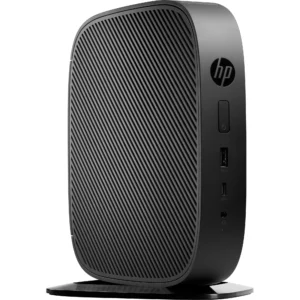
HP Thin Clients:
HP Thin Clients are compact computing devices designed primarily for remote access to servers and
virtual desktop environments. They are optimized for performance, security, and energy efficiency.
Features:
HP Thin Clients (e.g., HP t640)
Processor: AMD Ryzen 3 or 5 for efficient performance.
RAM: Configurable up to 16GB for multitasking.
Storage: Options for local storage up to 512GB SSD or eMMC for faster boot times.
Operating System: Supports Windows 10 IoT Enterprise or HP ThinPro for flexible use cases.
Connectivity: Multiple USB ports, dual display support, and optional Wi-Fi for versatile connectivity.
Security: Built-in HP Sure Start for BIOS protection and secure boot.
Management: Compatible with HP Device Manager for easy deployment and updates.
Energy Efficiency: Low power consumption, designed for eco-friendly use.
Form Factor: Compact design for space-saving in various environments.
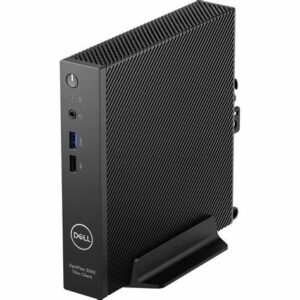
Dell Thin Clients:
Dell Thin Clients are lightweight computing devices designed for remote access to virtual desktops or
applications hosted on centralized servers. They typically have minimal local processing power,
relying on the server for computing tasks, which enhances security and simplifies management. Dell
Thin Clients are energy-efficient, often equipped with robust security features, and support multiple
connections for peripherals. They are ideal for environments like healthcare, education, and
enterprises where secure access to applications is essential while reducing hardware costs and
maintenance overhead. With options for various operating systems, they can seamlessly integrate
into existing IT infrastructures.
Features:
Dell Wyse Thin Clients
Model: Dell Wyse 5070
Processor: Intel Celeron or Core i3/i5 options for responsive performance.
RAM: Up to 16GB DDR4 for smooth multitasking.
Storage: Up to 64GB flash storage, with options for external storage.
Operating System: Supports Windows IO IoT, ThinOS, and Linux for versatile use.
Connectivity: Multiple USB ports, dual-display support, HDMI, and Ethernet for flexible connectivity.l
Security: TPM 2.0, secure boot, and other advanced security features.
Management: Simplified management with Wyse Management Suite for remote configuration and
updates.
Form Factor: Compact design, ideal for space-constrained environments.

HP Thin Clients:
HP Thin Clients are compact computing devices designed primarily for remote access to servers and
virtual desktop environments. They are optimized for performance, security, and energy efficiency.
Features:
HP Thin Clients (e.g., HP t640)
Processor: AMD Ryzen 3 or 5 for efficient performance.
RAM: Configurable up to 16GB for multitasking.
Storage: Options for local storage up to 512GB SSD or eMMC for faster boot times.
Operating System: Supports Windows 10 IoT Enterprise or HP ThinPro for flexible use cases.
Connectivity: Multiple USB ports, dual display support, and optional Wi-Fi for versatile connectivity.
Security: Built-in HP Sure Start for BIOS protection and secure boot.
Management: Compatible with HP Device Manager for easy deployment and updates.
Energy Efficiency: Low power consumption, designed for eco-friendly use.
Form Factor: Compact design for space-saving in various environments.

Dell Thin Clients:
Dell Thin Clients are lightweight computing devices designed for remote access to virtual desktops or
applications hosted on centralized servers. They typically have minimal local processing power,
relying on the server for computing tasks, which enhances security and simplifies management. Dell
Thin Clients are energy-efficient, often equipped with robust security features, and support multiple
connections for peripherals. They are ideal for environments like healthcare, education, and
enterprises where secure access to applications is essential while reducing hardware costs and
maintenance overhead. With options for various operating systems, they can seamlessly integrate
into existing IT infrastructures.
Features:
Dell Wyse Thin Clients
Model: Dell Wyse 5070
Processor: Intel Celeron or Core i3/i5 options for responsive performance.
RAM: Up to 16GB DDR4 for smooth multitasking.
Storage: Up to 64GB flash storage, with options for external storage.
Operating System: Supports Windows IO IoT, ThinOS, and Linux for versatile use.
Connectivity: Multiple USB ports, dual-display support, HDMI, and Ethernet for flexible connectivity.l
Security: TPM 2.0, secure boot, and other advanced security features.
Management: Simplified management with Wyse Management Suite for remote configuration and
updates.
Form Factor: Compact design, ideal for space-constrained environments.
